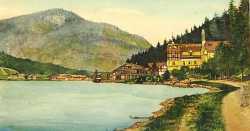Quoted By:
>Matthew 27:3-8
>When Judas, who had betrayed him, saw that Jesus was condemned, he was seized with remorse and returned the thirty pieces of silver to the chief priests and the elders. “I have sinned,” he said, “for I have betrayed innocent blood.” “What is that to us?” they replied. “That’s your responsibility.” So Judas threw the money into the temple and left. Then he went away and hanged himself. The chief priests picked up the coins and said, “It is against the law to put this into the treasury, since it is blood money.” So they decided to use the money to buy the potter’s field as a burial place for foreigners. That is why it has been called the Ḥaqel D'ma (field of blood) to this day.
- is remorseful
- throws money into the temple
- commits suicide
>Acts 1:18-19
>With the payment he received for his wickedness, Judas bought a field; there he fell headlong, his body burst open and all his intestines spilled out. Everyone in Jerusalem heard about this, so they called that field in their language Akeldama, that is, field of blood.
- no remorse
- uses money to buy some land
- dies due a freak accident
Acts = false scripture, Christians can't admit their bible is broken AF, also without the book of Acts, Paul of Tarsus is just another persecutor of the faith.
>When Judas, who had betrayed him, saw that Jesus was condemned, he was seized with remorse and returned the thirty pieces of silver to the chief priests and the elders. “I have sinned,” he said, “for I have betrayed innocent blood.” “What is that to us?” they replied. “That’s your responsibility.” So Judas threw the money into the temple and left. Then he went away and hanged himself. The chief priests picked up the coins and said, “It is against the law to put this into the treasury, since it is blood money.” So they decided to use the money to buy the potter’s field as a burial place for foreigners. That is why it has been called the Ḥaqel D'ma (field of blood) to this day.
- is remorseful
- throws money into the temple
- commits suicide
>Acts 1:18-19
>With the payment he received for his wickedness, Judas bought a field; there he fell headlong, his body burst open and all his intestines spilled out. Everyone in Jerusalem heard about this, so they called that field in their language Akeldama, that is, field of blood.
- no remorse
- uses money to buy some land
- dies due a freak accident
Acts = false scripture, Christians can't admit their bible is broken AF, also without the book of Acts, Paul of Tarsus is just another persecutor of the faith.










